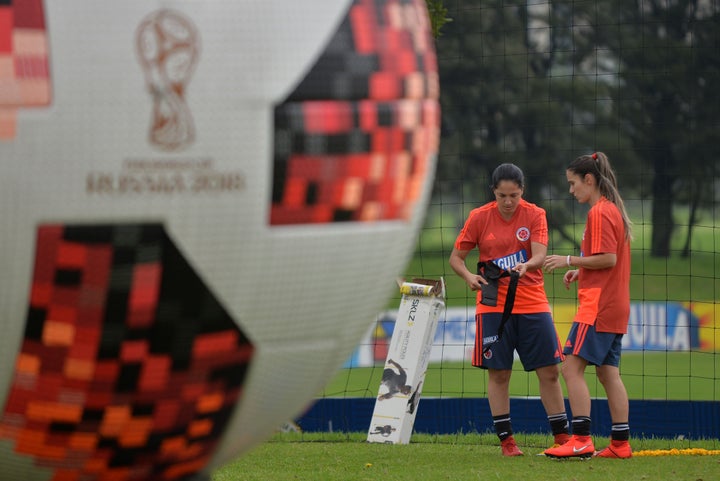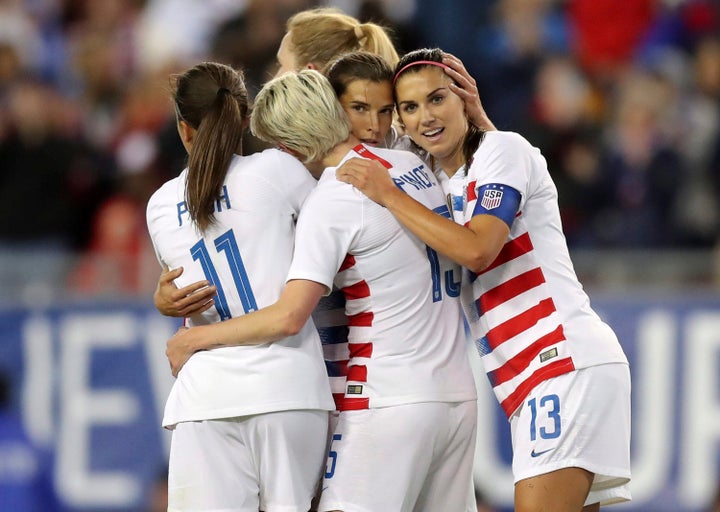The FIFA Women’s World Cup kicks off today. Media coverage and build-up are underwhelming compared to last year’s World Cup — which did not have the denominating “men’s” in the official event name.
Men have held back the development of women’s soccer, from prohibiting female participation in the past to creating toxic environments in today’s professional clubs and national teams. Laws preventing women from playing are now rare, but sexual harassment scandals, gender discrimination cases and sexist remarks abound in the sport. Recent stories involving the Colombian, American and Brazilian national teams, and the Vancouver Whitecaps, are only a few examples.

At the recreational level — without the financial pressures, uneven media attention, and differences in spectator interests that plague the professional sphere — gender relations in soccer must be much better, right?
As sociologists interested in sports, we examined games from a coed indoor soccer league at a Canadian university and reviewed existing studies only to conclude that coed sport environments remain highly male-dominated and role-differentiated.
In our pilot study, we documented 1,349 completed passes, 57 per cent of which occurred between men. Passes from women to women only accounted for five per cent of the total. Woman-to-man and man-to-woman passes each represented around 19 per cent of completed passes (typically, two men and two women played in the outfield, in addition to a male goalkeeper).
We observed numerous occasions in which men chose less-obvious plays instead of passing the ball to a female teammate who was in a good position in the field. Women were often relegated to marginal roles, such as putting the ball back into play after it had gone out of bounds, and were rarely engaged in fast-paced counter attacks.
There are many possible reasons for these imbalances, such as entrenched biases, more experience playing soccer or sex-based biological differences (variables which we could not isolate through naturalistic observation). Regardless of the factors at play, however, we cannot neglect that highly valued actions in the game mapped closely onto a gender category.

In a sport genre that is supposed to be inclusive and “co-educational,” the fact that men scored 90 per cent of the goals and carried out 80 per cent of the assists is problematic.
Coed leagues presumably reaffirm existing stereotypes and therefore do little to challenge gender inequalities in sport. Women end up framed as either an exception to the notion that men are better in sport or an example that proves it.
Sport scholars have analyzed coed leagues with rule modifications aimed at promoting a levelled playing field (e.g. batting order rules in softball, counting women’s touchdowns as nine instead of six points in flag football), but such attempts made gender even more salient and undervalued the performance of highly skilled women. These rules have thus been dubbed as “benevolent sexism.”
A soccer study from 20 years ago reported similar findings to ours, as well as noting the phenomenon of “stacking”: the placement of men in more central positions in the field, and the demotion of women to marginal ones.

And stacking is not only limited to the pitch. At the political and executive levels, men occupy the majority of important positions. While Fatma Samoura became FIFA’s first female secretary general in 2016, the FIFA Council (the federation’s central decision-making body) consists of 37 members — only six of whom are women. None of them occupy one of the eight vice president positions.
It was only in October 2018 that FIFA launched a Women’s Football Strategy, the organization’s first-ever effort to promote women’s football worldwide. Even in the upcoming Women’s World Cup, 14 of the 24 participating teams are coached by men.
A women-centered approach
The longstanding ties between the world’s most popular sport and patriarchy are clearly difficult to sever. While the average spectator might now be more attuned to issues of racism and homophobia in soccer than in the past, gender and sexism have remained largely sidelined.
The call from radical feminist scholars for separatist strategies is thus highly pertinent in soccer. A women-centered approach to tackling inequality would circumvent the “benevolent sexism” of coed sport and immediately demand spaces of representation on and off the field. This endeavour would gain even greater traction with a larger cultural shift, though the perspective for that often seems bleak.
The average attendance in Germany’s top women’s league is 850 per game. And this is a country whose women’s national team has been crowned European, Olympic and world champions. Recent events, however, provide some hope.
In March, more than 60,000 fans flocked to Madrid’s Metropolitano stadium to watch the most anticipated game in Spain’s top flight of women’s soccer, the clash between Atletico Madrid and Barcelona — a new world record attendance. In France, the host country of this year’s World Cup, 26,000 spectators set an attendance record in April for the country’s domestic league.
An increase in the popularity of women’s soccer might also prove beneficial for gender relations in coed sport settings. A change in perception on the world stage could help reduce stereotypes and bring more equality to recreational grounds, incentivizing male players to see their female counterparts as equivalent teammates.
The tournament which France and South Korea kick off might not be a media highlight, and it never has been, but it should be celebrated for what it is: a display of excellence in soccer by the best players from all over the world, an example of what athletes can achieve as players on the pitch and role models off of it, a step in the right direction towards equality in participation and appreciation of the sport.
Have an opinion you’d like to share on HuffPost Canada? You can find more information here on how to pitch and contact us.
Also on HuffPost: